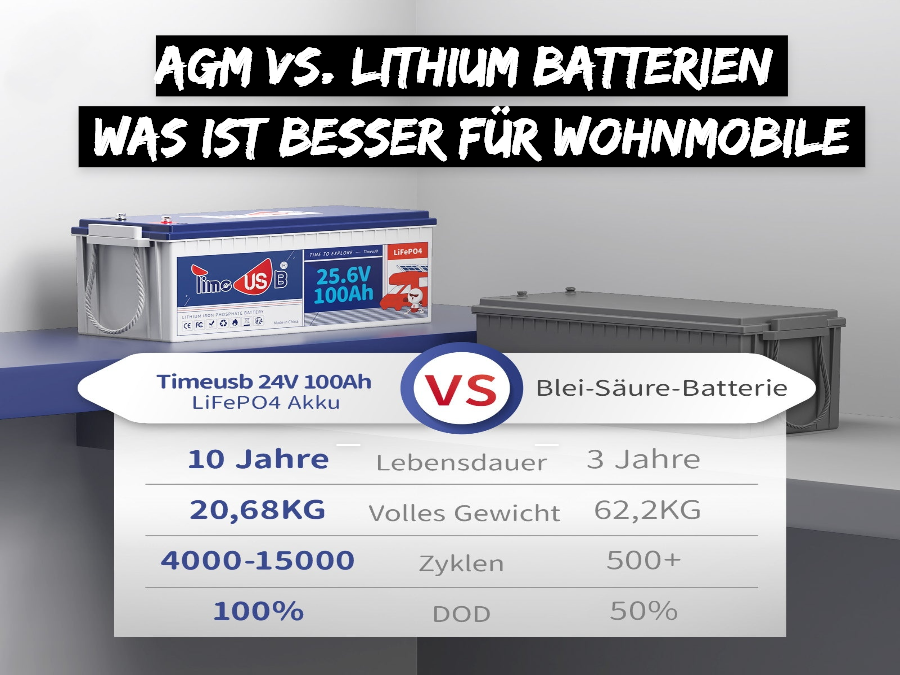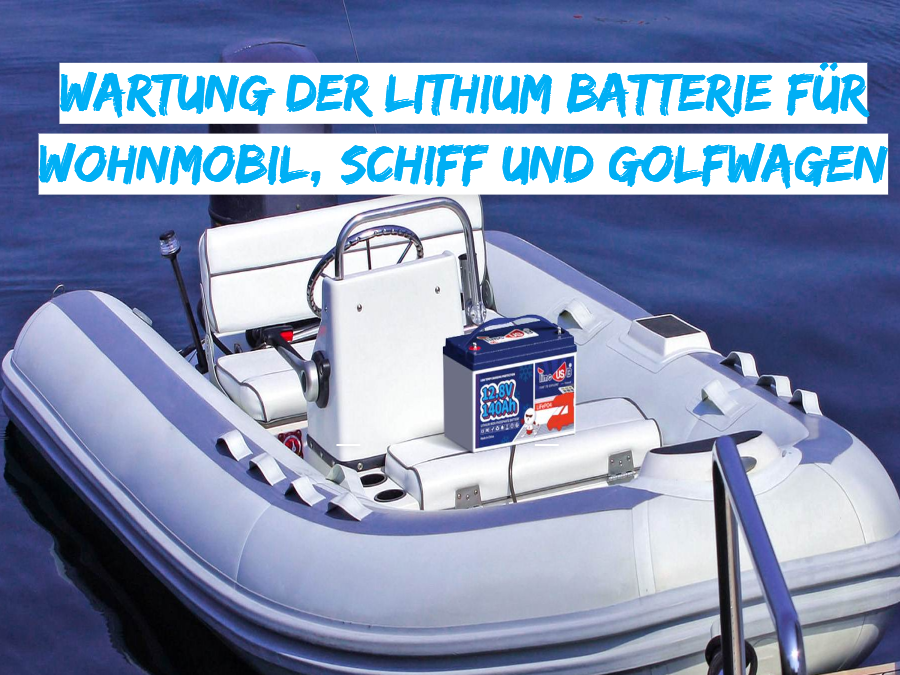[Complete Guide] Knowledge of Battery Ampere Hours (Ah)
![[Vollständige Anleitung] Wissen über Batterie Amperestunden (Ah)](http://timeusbpower.de/cdn/shop/articles/Solarmodul_oder_MPPT_Ladegregler_mit_Timeusb_Lithium_ionen_Batterie_12V_140Ah.png?v=1716542415&width=1600)
In the world of batteries, the term "ampere-hours" (Ah) is often used to describe the capacity and lifespan of a battery. Whether you're a tech enthusiast, an electric vehicle owner, or a homeowner with solar panels, understanding amp-hours is critical to making informed decisions about your power needs.
In this article, we will explore the concept of amp hours, its meaning, and how it affects various aspects of our daily lives.
What are battery ampere hours (Ah)?
Ampere hours, abbreviated Ah, are a unit of measurement used to describe the energy storage capacity of a battery. It represents the amount of energy a battery can deliver over a certain period of time. For example, a 10 Ah battery can deliver 1 amp of current for 10 hours, 2 amps for 5 hours, and so on. Basically, the higher the Ah value, the longer the battery will last before it needs to be recharged.
When comparing electrical current to the flow of water through a pipe in a plumbing system, volts (V) can be compared to water pressure, while ohms (Ω) measure resistance, similar to the size of a pipe.
Amperes (A) represent the flow of current, similar to how the flow rate of water through a pipe is measured in gallons or liters per minute. One ampere is the current that flows when one volt of electrical pressure is applied against a resistance of one ohm.
The relationship between current, voltage, and resistance is best understood using Ohm's Law, which states that current (I) is equal to voltage (V) divided by resistance (R), or mathematically, I = V/R. So, if a device applies a voltage of one volt across a resistance of one ohm, the resulting current is one ampere.
On a practical level, understanding amps, ohms and volts relates to the power requirements of everyday devices. For example, a standard LED light bulb might use around 0.02 amps, while a large appliance like a refrigerator might require between 3 and 15 amps.
A basic understanding of how current affects the operation of appliances and equipment is also important when assessing the suitability of a renewable energy system, such as a LiFePO4 lithium battery, helpful.
How do you calculate battery capacity?
Battery capacity is usually measured in ampere hours (Ah) or milliampere hours (mAh) and represents the amount of charge a battery can store. To calculate battery capacity, you can use the formula:
Capacity (Ah) = Current (A) × Time (hours)
Where:
- Capacity is the battery capacity in ampere hours (Ah)
- Current is the current drawn from the battery in amperes (A)
- Time is the duration of power consumption in hours (hrs.)
For example, if a device draws a current of 0.5 A from a battery for 10 hours, the capacity of the battery can be calculated as follows:
Capacity = 0.5 A × 10 h = 5 Ah
This means that the battery has a capacity of 5 amp hours, which means it can deliver a current of 0.5 A for 10 hours.

The difference between amperes, ohms and volts
Amperes, ohms and volts are basic units for measuring various properties in electricity and electronics.
Ampere (A): Amperes measure electric current, i.e. the flow of electrical charge.An ampere is defined as the flow of charge of one coulomb per second. Simply put, it measures how much electric current flows through a conductor. Current is analogous to the flow of water in a pipe; amps measure the flow rate of electric charge.

Ohm: Ohm measures electrical resistance. Resistance is the resistance that a material offers to the flow of electrical current. An ohm is the resistance value that limits the flow of one ampere of current when an electrical pressure of one volt is applied across it. In other words, ohms measure how difficult it is for electricity to flow through a material.
Volt: Volts measure the electrical potential difference, the force or pressure that drives electrical current through a conductor. A volt is defined as the potential difference across a conductor when one ampere of current is flowing through it and one watt of power is being consumed. Put simply, volts measure the "thrust" or pressure behind the flow of current.
In summary, amps measure the flow of current, ohms measure the resistance to that current, and volts measure the pressure driving the flow. These three units are linked by Ohm's Law, which states that the current (in amperes) flowing through a conductor between two points is directly proportional to the voltage (in volts) at the two points and inversely proportional to the resistance (in ohms) between them.
Mathematically, Ohm's law is expressed as V = I * R, where V is the voltage, I is the current and R is the resistance.
AC vs. DC
AC (alternating current) and DC (direct current) are two different types of electrical current. Here is a brief overview of each:
1. AC (alternating current):
- In alternating current, the direction of the electric current reverses periodically.
- Alternating current is the type of electrical current used in most homes and businesses because it can be easily converted into different voltages using transformers.
- Alternating current is the type of electricity generated by power plants and is transmitted over long distances more efficiently than direct current.
2. DC (direct current):
- With direct current, the electric current flows in only one direction.
- Direct current is commonly used in batteries and solar cells, as well as in some electronic systems and industries.
- Direct current is also used in some specific applications such as subway systems and data centers, where it offers advantages in terms of control and efficiency.
Is a battery with a higher Ah better?
AH is the unit for measuring electrical charge and indicates the number of amperes that can be drawn from a battery within a certain period of time, typically one hour.
Essentially, AH reflects the capacity of a battery, and a higher AH means a larger capacity.
So does a battery with a higher Ah offer more power?
Consider the following example:
A 50 Ah battery can deliver 50 amps of current within an hour. Likewise, a 60 Ah battery can deliver 60 amps of current in the same period.
Both batteries can deliver 60 amps, but the battery with the higher capacity takes longer to fully discharge.
Consequently, a higher AH means a longer runtime, but not necessarily higher performance.
In summary, a battery with a higher Ah will last longer than a battery with a lower Ah.
The specific AH rating depends on the performance and runtime of the device. Opting for a battery with a higher AH will result in significantly longer use on a single charge.
Batteries offer versatility
One of the most fascinating aspects of batteries is their ability to to be connected in series or parallelto adjust voltage and current. Using a few equations, you can create a battery bank tailored to different needs.
Are you preparing to equip a van with a renewable energy system? Or maybe equip a cabin with off-grid devices? Be sure to discover the Timeusb online store for technologically advanced and high-quality deep-cycle lithium batteries.




